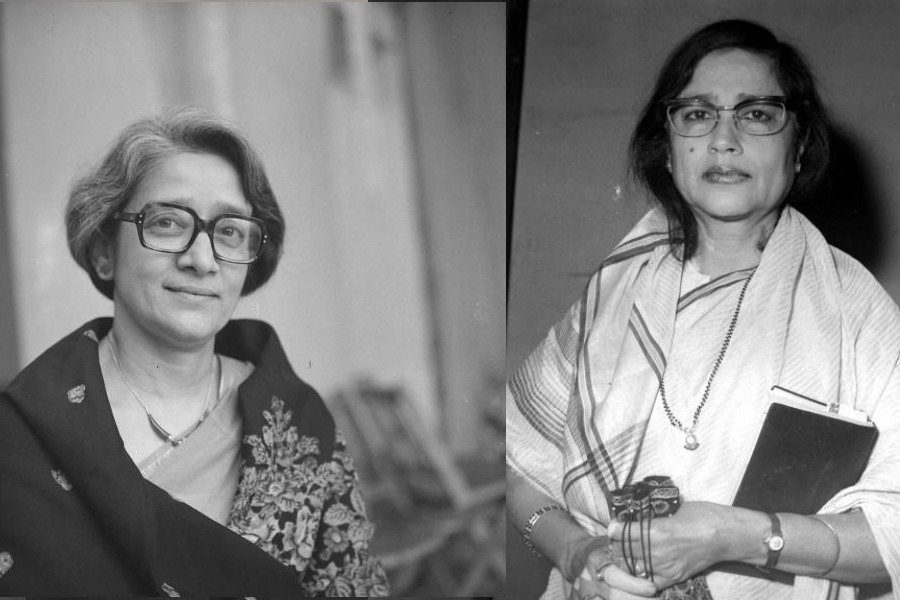The year 2024 marks the birth centenary of both Suchitra Mitra and Kanika Bandyopadhyay, two legendary voices of Rabindra Sangeet, their birth anniversaries passing on September 19 and October 12 respectively. Their interpretations of Rabindranath Tagore’s compositions captured the spirit, depth, and nuance of his work, endearing them to generations of listeners. Suchitra’s powerful, resonant voice conveyed emotions ranging from sorrow to defiance, while Kanika’s delicate, soulful singing brought a serene, meditative quality to each piece. Together, they shaped the modern performance of Tagore’s music, transforming his songs into universally beloved treasures. This quiz is an ode to their artistry, celebrating their timeless contributions to Bengali music and heritage.
1. How is this quaint railway station called Gujhandi in the state of Jharkhand associated with an important life event of one of Suchitra Mitra and Kanika Bandyopadhyay?
2. Who wrote the poem Gaan Gaan Gaan (Song Song Song) dedicated to one of Suchitra Mitra and Kanika Bandyopadhyay? The poem reads:
Gaan gaan gaa
Kebol gaan …
Surer madokotay
Nesha-dhorano gaan
which loosely translates into
Nothing but songs—
From melodies’ nectar, songs arise,
each note a whispered intoxication in disguise.
3. How does one of the stalwarts in focus in this quiz today relate to this children’s classic Burmay Jokhon Boma Pore (When Burma was bombed)?
4. Identify this beautiful park and how is this associated with either of the two?
5. What is so unique about the songs Ore oi bondho holo dwar and Gan niye mor khela?
6. Writer, historian and founding member of Indian People’s Theatre Association (IPTA), Chinmohan Sehanbeesh recounted an incident about Suchitra Mitra that happened in 1946, when the city was in turmoil following widespread communal violence and anarchy. “I remember the processions taken out by writers and artistes. As soon as they walked on the deserted road, thousands of people would mob them and surround their vehicles. Once, I noticed Suchitra suddenly stand atop a truck surrounded by hordes of people who were baying for blood and she started singing.” Which Rabindra Sangeet did she render?
7. This song, known for its layered history of musical transcriptions, had its first notation by Jyotirindranath Tagore. Later, a version notated by Indira Devi was published in Baisakh, 1363 (Bengali calendar). In 1972, Kanika Bandyopadhyay recorded the song for the film Bigolito Karuna Jahnabi Jamuna, with a new notation by V. Balsara. This rendition has since become the most widely recognised version. Which song are we referring to?
8. Suchitra’s mellifluous voice flowed effortlessly through the haunting strains of Rabindranath Tagore’s beloved composition, Krishnakoli ami tarei boli (I call her by the name Krishnakoli). Yet, she also breathed life into a contrasting piece, inspired by the very essence of that idyllic rural song. In this poignant composition, Krishnakoli, clad in a tattered sari, meanders through desolate streets, her gaunt figure a haunting testament to starvation. Her plaintive cries for sustenance reverberate in the air, weaving a stark narrative of despair that stands in stark contrast to the serene beauty of Tagore’s original. What is this haunting song, and who is the composer behind its sorrowful melody?
9. In 1939, Tagore wrote a hauntingly beautiful song for his play Dakghar (The Post Office), but he left a special instruction with Shailaranjan Majumder, the song’s music transcriber: it was not to be sung until after his passing. As Tagore lay in his final hours in Calcutta, voices filled the Santiniketan temple that evening, singing this song for the first time. Kanika Bandyopadhyay, Indulekha Ghosh, Amala Bose, and Shailaranjan Majumder lifted their voices, thick with emotion, in a tribute to his spirit. Which song is this?
10. This chair, once used by Tagore, now sits preserved within the walls of a memorabilia museum. What is the name of the house that hosts this museum?
11. Can you identify the national award-winning film where Suchitra Mitra makes a rare guest appearance? In her scene, she delivers a striking line, remarking that in families where the wife outshines the husband in fame, conflict is all but certain. But here’s the intrigue—by her side, holding the microphone in this picture with quiet grace, stands a celebrated actress. Who is this iconic actress?
12. Kanika Bandyopadhyay had a whimsical principle: if the name of a place struck her as unattractive, she simply wouldn’t go there to sing. Once, she received an invitation to perform in a village with a name she found rather unappealing. She declined without a second thought. Soon after, the renowned singer Dwijen Mukhopadhyay called her with an enticing proposal—a chance to perform in a place so beautiful it could rival Santiniketan itself. This, she accepted gladly. After the programme ended, however, she discovered a curious twist: this picturesque spot was none other than the very place she had dismissed for its “ugly” name. What is the name of this village, now grown into an industrial township?
Send your answers by email to saltlake@abp.in by December 24, 2024. Attempt at least five answers.











